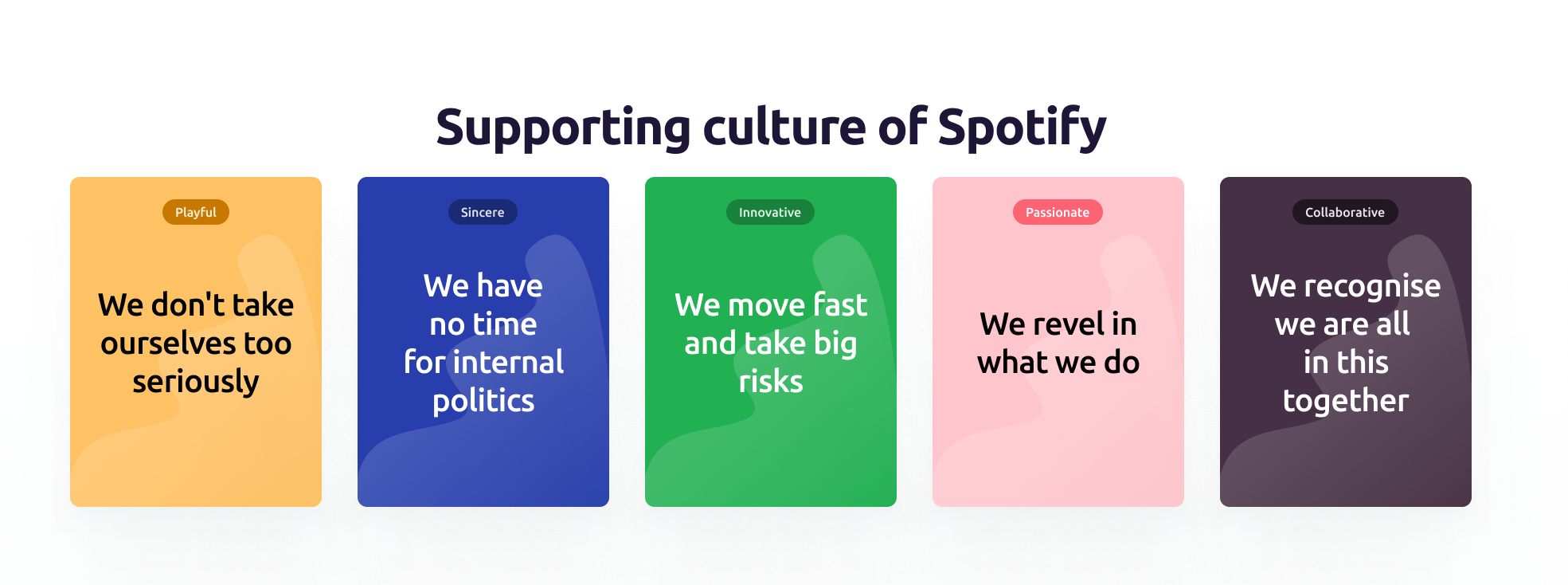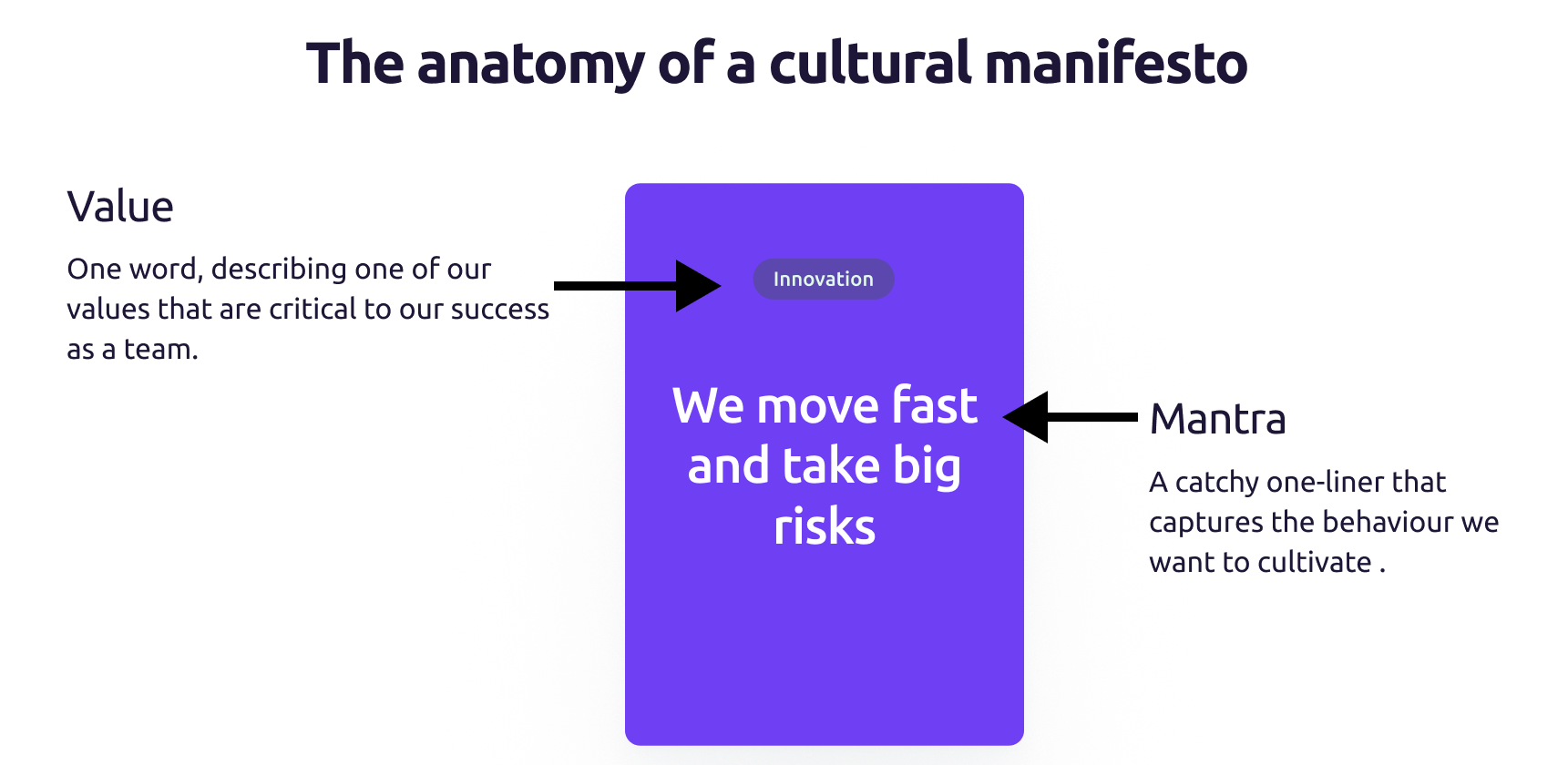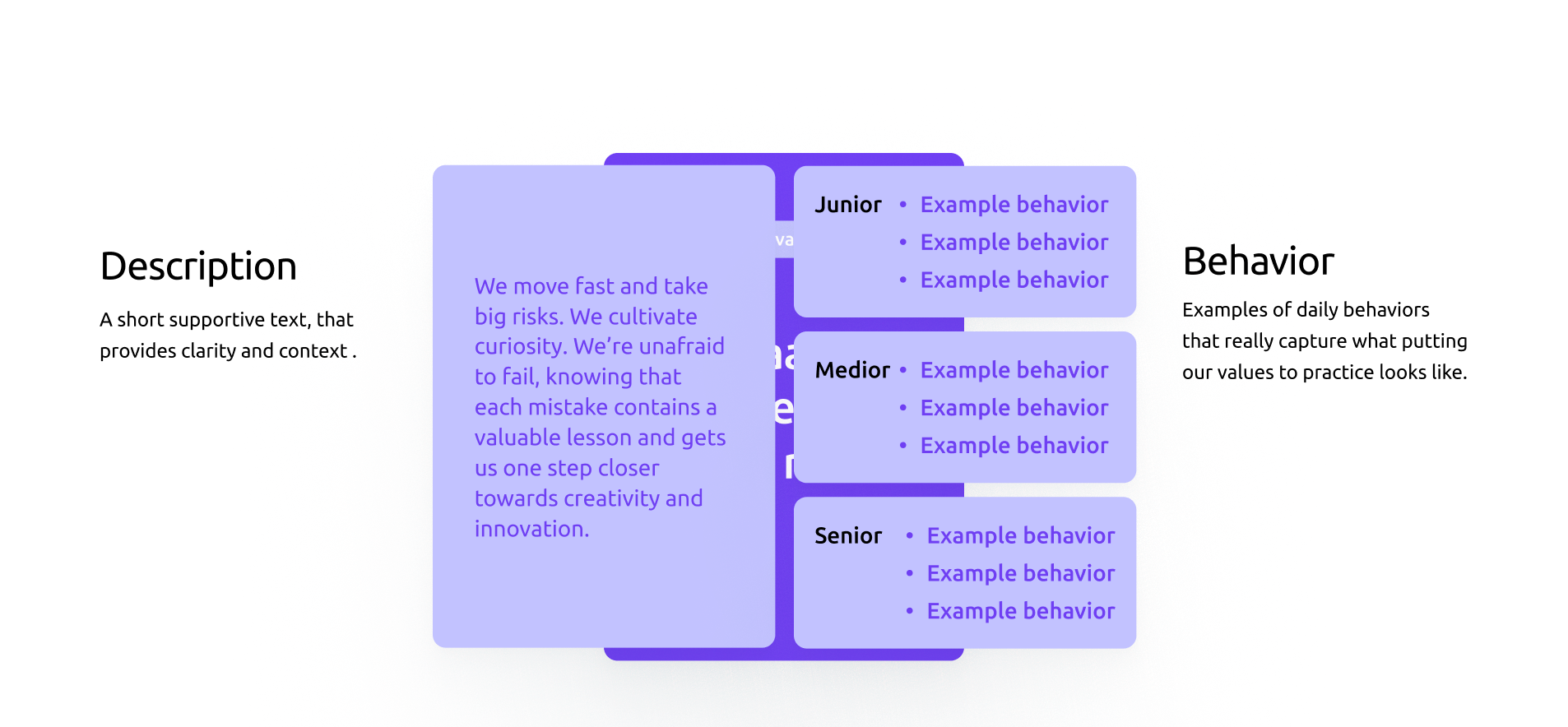How to Build a Cultural Manifesto that Your Team Truly Embraces and Applies
The Anatomy of a Cultural Manifesto
Every winning team shares a set of shared values that act as guiding principles in how a team and all its members operate. Initially, these shared values may be implicit. But as the team grows, it becomes essential for these values to be explicitly defined and applicable to all team members. This is where the Cultural Manifesto comes into play: a clear mission statement supported by a set of explicitly defined values and behaviors that form the foundation of the team's success. But how do you create such a cultural manifesto? What are the components that every strong manifesto shares?
This post is the first part of a three-part series where we describe the path and approach to Cultural Maturity: from defining your winning culture, implementing your cultural values in your employee journey, to the collective application of your cultural values in the daily employee experience.
As a team begins to develop, the team culture evolves organically and is implicitly understood. Finding words to describe the values the team shares is simply not necessary. However, as the team exceeds a certain size and new members join, the team's culture is no longer self-evident. In fact, every growing team at this point must ensure that their winning cultural formula does not get lost.
This is where the cultural phase of a team transitions from 'implicit and undefined' to 'explicit and defined.' This typically happens when a team grows larger than about 20 team members.
Perhaps your organization is in this transition phase. Or maybe your team has already surpassed that size, and a well-defined set of cultural values is precisely what you need. In this deep dive, we delve into the building blocks and approach of a strong, embraced, and applicable Cultural Manifesto:
- Characteristics: What makes a good Cultural Manifesto?
- Contents: What structural composition should a Cultural Manifesto have?
- Approach: How do you approach this?
Part 1: What Makes a Good Cultural Manifesto?
Cultural Manifestos come in all shapes and sizes, which is entirely logical: every company has its unique culture. But your Manifesto is not just an expression of your culture's character; it's also a practical tool aimed at providing direction in your team's development and culture. And it can only fulfill that function when it meets certain characteristics:
- In Service of the Goal: Every good cultural manifesto starts with the company's purpose. What do we want to achieve, and which shared cultural values will lead us there? Culture is the means, business is the goal. Any manifesto that solely describes the culture in isolation misses a crucial element.
- Clear and Applicable: A manifesto is effective only when it helps team members put its content into practice. So, every good manifesto must not only be crystal clear but also formulated in a way that assists team members in translating it into daily practice.
- Embraced & Credible: Every culture is the sum of the group's behavior. Hence, a manifesto that describes a culture that isn't embraced in practice will not serve its purpose. A manifesto outlining a culture the team aspires to achieve (which is an ambition) is not an issue, as long as the team agrees that it's the right culture to strive for and collectively works towards it.
- Distinctive and Inspiring: While every manifesto consists of similar building blocks, it's crucial that team members recognize the uniqueness of your culture and can take pride in it. Clichés and generalities should be avoided. Attention to nuance and sharp language use is crucial.
To achieve these goals, both the structural composition of the Manifesto and the process of creating it need to be aimed at achieving these objectives. Below, we'll delve into both.
Part 2: What Structural Composition Should a Cultural Manifesto Have?
To ensure that a Cultural Manifesto is purposeful and practically applicable, each Manifesto must consist of several fixed 'building blocks.' These building blocks form the bridge between a company's mission and the daily behavior that leads to success. Let's walk through these building blocks using Spotify's Manifesto as an example:
Building Block 1: The Mission Statement
Culture isn't an end goal but a means to an end. Therefore, a Cultural Manifesto should start with the team/company's objective. The role of the mission statement is to clarify the ambition and what success looks like. This clarity guides the formulation of the culture enabling the team to achieve that goal.
A mission statement doesn't need to be a detailed plan outlining financial targets and growth figures. On the contrary, be cautious with overly 'fluffy' purpose statements ('change the world for the better') as they might be too vague in practice to provide direction.
Example:
Spotify's mission statement, with the term 'art,' indicates that they don't limit themselves to just music (but also include podcasting), see both creators (musicians/podcasters) and listeners as their audience, and go beyond mere listening/unlocking to 'inspiring.' This is reflected in Spotify's practices, notably in their continuous quest for new features to discover music together.
Building Block 2: Cultural Values
Following the mission statement are the cultural values: a set of shared principles guiding how the team interacts and collaborates. These values apply to everyone, regardless of role or experience level.

These values are about the sum total: they complement and balance each other out. Structurally, each value follows the same format:
Building Block 2A: A Value
Every cultural value can be summarized in one word: a particular characteristic essential to the overall cultural formula. These terms are usually straightforward and not particularly distinctive, and rightfully so—there's no reason to aim for originality at this level.
Building Block 2B: A Mantra
Next is the mantra: a catchy phrase aimed at staying in people's minds. It's preferably active ('we always do...') and designed to generate interest and enthusiasm. The goal is to infuse personality and uniqueness into the wording. If the formulation allows for a bit of multiple interpretations, that's not an issue.

Building Block 2C: Description
While the mantra focuses on catchiness and uniqueness, the underlying description aims to provide clarity. It's a brief paragraph meant to ensure that everyone understands the same thing, specifying what is meant and why this value is indispensable for success.
Building Block 2D: Behavioral Examples
Finally, each value is supported by several behavioral examples illustrating how that value manifests in practice. These examples don't need to be exhaustive; the aim is to mention a few examples ('consider...') to help team members link the definition to daily practice. It helps them apply these values in their work and interactions, translating them across different levels within a team (e.g., Junior, Mid-level, Senior).

The cultural values remain consistent regardless of your role level. However, how a value looks at the behavioral level differs based on whether you're a starter or in a leadership role.
Part 3: How Do You Approach This?
To arrive at a mission-driven yet embraced and credible Manifesto, a particular paradox must be overcome. Namely: defining culture isn't a democratic process. But culture is -by definition- of the entire group. How do you deal with this contradiction in your approach?
We believe that 'co-writing' is the best way to create a strong and embraced manifesto. For this, a group of representatives (ideally a diverse cross-section of old/young, high/low in experience, leadership/non-leadership, etc.) from the team should come together as the co-writing team.
By going through a joint writing process with them, you not only achieve a credible result but often also benefit the uniqueness and character of the Manifesto. However, this approach only works when several important conditions are met:
- Goal-driven: The role of the co-writing team is to collectively formulate the culture that enables the team to achieve its goal. The co-writing team's role isn't to determine that goal (that's up to the founder, director, partners, board, whoever). In short, the mission statement must be fixed before the co-writing process can start and serve as a briefing.
- Ambition: Throughout the process, it must be clear that the aim is to define the culture that guides the team towards its goal. Therefore, the defined culture can be an ambition. It's not about describing the culture as it is today. If there's too great a gap between cultural ambition and cultural reality, the co-writing team will quickly identify it.
- Iteration: Your Manifesto should be distinctive and unique but also applicable. For this reason, iteration is essential: ensure the co-writing team quickly produces a first version and immediately tests its practical applicability (for example, by using the draft values in a feedback exercise). This way, you identify overlaps, blind spots, and can concretely refine as needed.
- Facilitation: The co-writing process should yield results and not become an endless debate. Two roles are crucial here. The first role is process facilitation: ensuring the team sticks to the briefing and makes concrete choices. The second role is that of the copywriter: capturing the input from the co-writing team and making it concrete in language.
Lees meer blogs
Vacature: Culture Consultant
Jr. Culture Consultant positie
Jr. Culture Consultant positie
SUMM zoekt een energieke, ambitieuze en scherpe Jr. Culture Consultant. Een ideale eerste of tweede baan om veel te leren, directe klantervaring op te doen, en meteen verantwoordelijkheid te krijgen. Als Jr. Culture Consultant sta je centraal in hoe wij onze klanten bedienen: van het begin van een relatie tot de doorlopende diensten die we leveren om onze klanten te helpen een sterke teamcultuur te bouwen en te onderhouden.